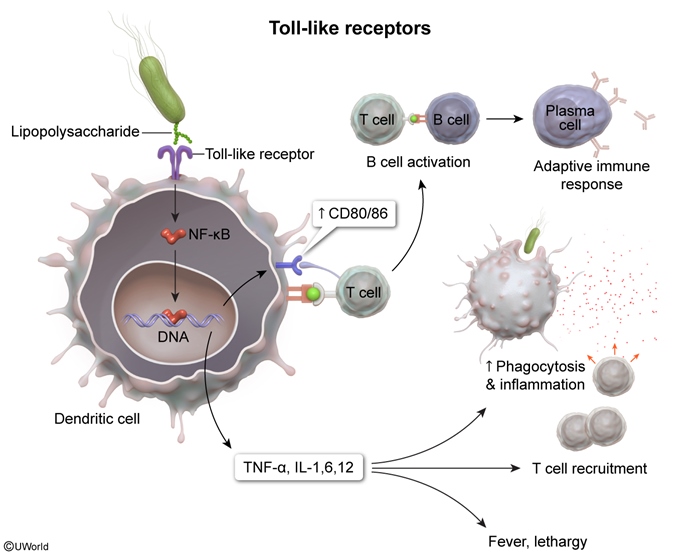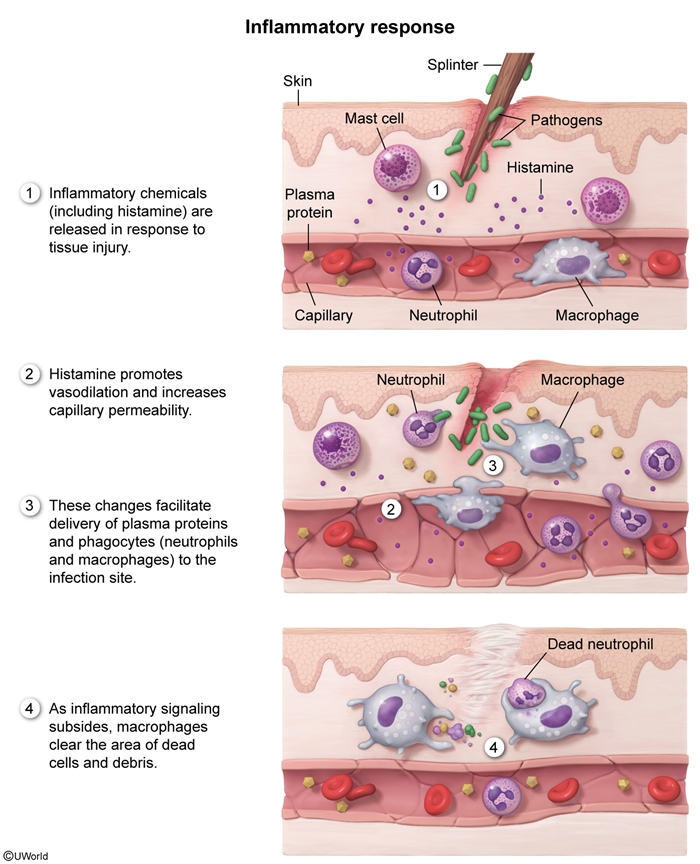Sepsis
Article Sections
Introduction
Sepsis represents a dysregulated host immune response to infection, potentially leading to shock and acute organ failure. The terminology used to describe sepsis and related conditions (eg, septic shock) has evolved over time.
Pathophysiology
Many pathogens can produce a dysregulated host inflammatory response. Bacterial infections are the most common cause of sepsis. However, viral (eg, SARS-CoV-2), fungal (eg, Candida spp), and protozoal (eg, Plasmodium) sepsis can occur as well. Pathogens responsible for sepsis depend on specific host risk factors and sites of infection, as illustrated by the following associations:
- Respiratory system infections (eg, community-acquired pneumonia): Streptococcus pneumoniae, Haemophilus influenzae, Moraxella catarrhalis
- Urinary tract infections (eg, pyelonephritis): Escherichia coli, Proteus mirabilis, Klebsiella spp.
- Skin and soft tissue infections (eg, cellulitis):
Continue Learning with UWorld
Get the full Sepsis article plus rich visuals, real-world cases, and in-depth insights from medical experts, all available through the UWorld Medical Library.
Figures

